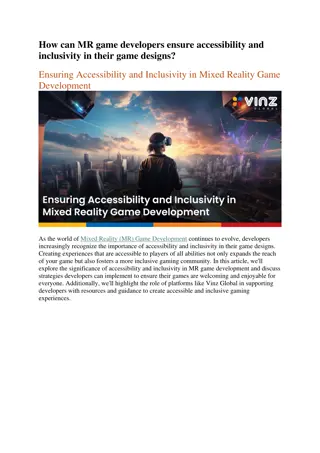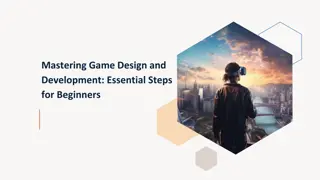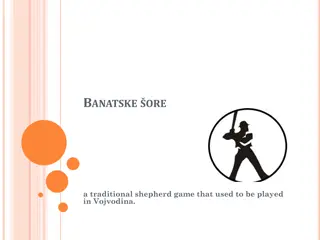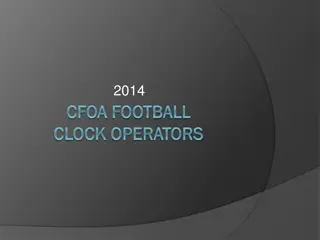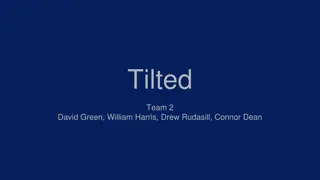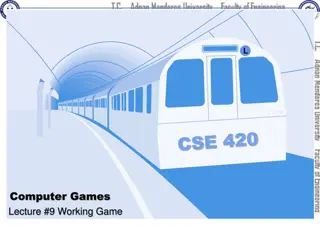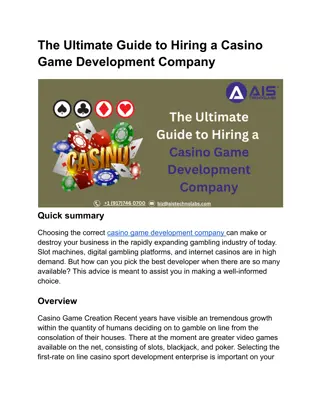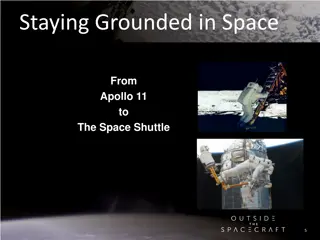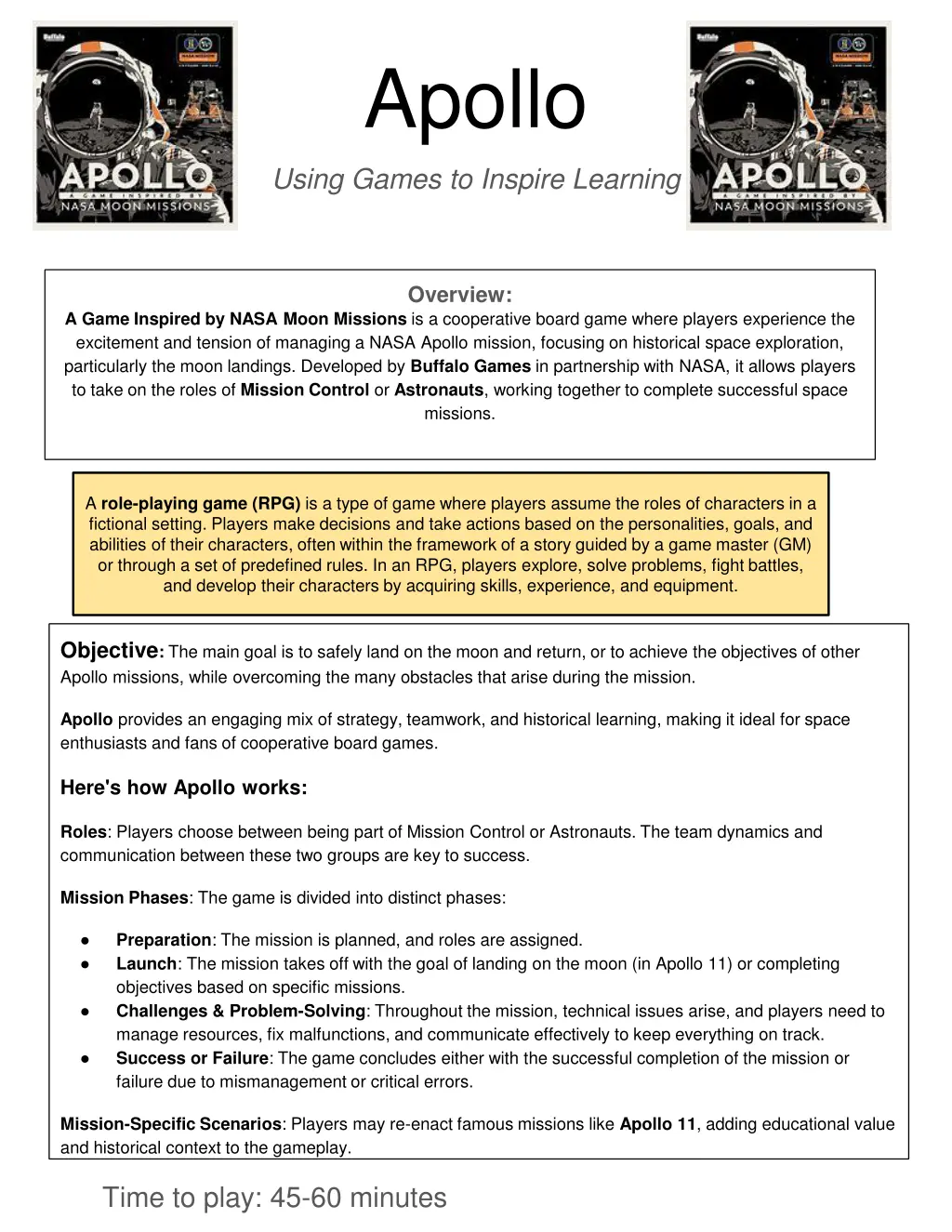
Inspiring Learning Through Apollo Board Game
"Explore the excitement of Apollo missions with this cooperative board game inspired by NASA, focusing on space exploration and teamwork. Learn historical events, STEM concepts, teamwork, problem-solving, and resource management. Play roles of Mission Control or Astronauts, re-enact missions like Apollo 11, and develop skills in critical thinking, communication, and resilience. Experience the challenges and triumphs of space exploration in a fun and educational way. Ideal for space enthusiasts seeking an engaging mix of strategy and learning."
Download Presentation

Please find below an Image/Link to download the presentation.
The content on the website is provided AS IS for your information and personal use only. It may not be sold, licensed, or shared on other websites without obtaining consent from the author. If you encounter any issues during the download, it is possible that the publisher has removed the file from their server.
You are allowed to download the files provided on this website for personal or commercial use, subject to the condition that they are used lawfully. All files are the property of their respective owners.
The content on the website is provided AS IS for your information and personal use only. It may not be sold, licensed, or shared on other websites without obtaining consent from the author.
E N D
Presentation Transcript
Apollo Using Games to Inspire Learning Overview: A Game Inspired by NASA Moon Missions is a cooperative board game where players experience the excitement and tension of managing a NASA Apollo mission, focusing on historical space exploration, particularly the moon landings. Developed by Buffalo Games in partnership with NASA, it allows players to take on the roles of Mission Control or Astronauts, working together to complete successful space missions. A role-playing game (RPG) is a type of game where players assume the roles of characters in a fictional setting. Players make decisions and take actions based on the personalities, goals, and abilities of their characters, often within the framework of a story guided by a game master (GM) or through a set of predefined rules. In an RPG, players explore, solve problems, fight battles, and develop their characters by acquiring skills, experience, and equipment. Objective: The main goal is to safely land on the moon and return, or to achieve the objectives of other Apollo missions, while overcoming the many obstacles that arise during the mission. Apollo provides an engaging mix of strategy, teamwork, and historical learning, making it ideal for space enthusiasts and fans of cooperative board games. Here's how Apollo works: Roles: Players choose between being part of Mission Control or Astronauts. The team dynamics and communication between these two groups are key to success. Mission Phases: The game is divided into distinct phases: Preparation: The mission is planned, and roles are assigned. Launch: The mission takes off with the goal of landing on the moon (in Apollo 11) or completing objectives based on specific missions. Challenges & Problem-Solving: Throughout the mission, technical issues arise, and players need to manage resources, fix malfunctions, and communicate effectively to keep everything on track. Success or Failure: The game concludes either with the successful completion of the mission or failure due to mismanagement or critical errors. Mission-Specific Scenarios: Players may re-enact famous missions like Apollo 11, adding educational value and historical context to the gameplay. Time to play: 45-60 minutes
Learning Goals: The learning goals of the Apollo board game are centered around understanding space exploration, teamwork, problem-solving, and resource management. Here are some key learning objectives: 1. Understanding Historical Space Exploration: Players gain insight into the Apollo missions and NASA s efforts to land humans on the moon. The game familiarizes players with key events, terminology, and challenges of space travel during the Apollo era. Recreating historical missions like Apollo 11 offers a deeper appreciation for real-world space exploration and its significance. 2. STEM Education (Science, Technology, Engineering, Math): Players learn about the scientific and technological principles behind space missions, such as fuel consumption, oxygen regulation, and spacecraft systems. Understanding the importance of engineering in solving technical problems that arise during space travel. Encourages interest in space-related fields by engaging with real-world NASA data. 3. Teamwork & Communication: Emphasizes the need for clear, effective communication between players in different roles (Mission Control and Astronauts). Players must work together, sharing information and updates to achieve the mission s objectives. Demonstrates the importance of collaboration in high-stakes, time-sensitive environments. 4. Problem-Solving & Critical Thinking: Players are faced with unexpected challenges, simulating real-life malfunctions or crises during space missions. They need to quickly assess situations, manage resources, and find solutions under pressure. Develops skills in logical reasoning, decision-making, and strategic planning. 5. Resource Management: Teaches players to balance limited resources (like oxygen, fuel, and power) to keep the mission going. Reinforces the concept of prioritization, where players must decide which problems to address first based on their urgency and impact on the mission. 6. Resilience & Adaptability: Players experience the difficulties astronauts and NASA engineers faced when things didn t go according to plan. Encourages resilience by requiring players to adapt their strategy when new challenges emerge. 7. Risk Assessment & Mitigation: Players learn about the importance of anticipating risks and making informed decisions to avoid mission failure. They engage in a dynamic environment where risk-taking must be calculated and weighed against the benefits of advancing the mission. Overall, Apollo fosters a blend of educational content with real-world applications, making it a fun and enriching way to learn about space exploration, teamwork, and the complexities of mission planning.
NGSS Standards Related to Apollo: 1. Science and Engineering Practices NGSS Practice 1: Asking Questions and Defining Problems Players are required to address various mission-related challenges, much like engineers and scientists who define problems in space travel. The game simulates scenarios where questions must be asked to diagnose and solve spacecraft issues. NGSS Practice 2: Developing and Using Models The game provides a simplified model of real-world space missions. Through gameplay, students engage in conceptual models of spacecraft systems, fuel use, and resource management, reflecting the real challenges NASA astronauts and engineers faced. NGSS Practice 4: Analyzing and Interpreting Data Mission Control players monitor various mission metrics (e.g., fuel, oxygen, energy levels), requiring data interpretation to guide decisions. This reflects real-world practices in space exploration, where astronauts and engineers analyze critical data to ensure mission success. NGSS Practice 5: Using Mathematics and Computational Thinking Players are involved in calculations related to resource management (e.g., balancing oxygen, fuel usage). The game incorporates mathematical thinking by requiring players to optimize these resources over time, a key challenge in space exploration. NGSS Practice 6: Constructing Explanations and Designing Solutions Players need to diagnose problems (like malfunctions in spacecraft systems) and come up with strategies to solve them using available resources, mimicking the process of designing solutions in engineering challenges. 2. Disciplinary Core Ideas PS3: Energy The game incorporates concepts of energy, such as fuel consumption and power use, which align with PS3.A: Definitions of Energy and PS3.B: Conservation of Energy and Energy Transfer. Players must understand how energy systems on spacecraft are managed and conserved during missions. ETS1: Engineering Design The game focuses heavily on the engineering design process, as players must identify and solve complex problems. This aligns with standards ETS1.A: Defining and Delimiting Engineering Problems, ETS1.B: Developing Possible Solutions, and ETS1.C: Optimizing the Design Solution. Throughout the game, players simulate solving real-world space mission challenges by designing solutions under constraints. ESS1: Earth s Place in the Universe The game s theme of space exploration ties into ESS1.B: Earth and the Solar System, providing a foundation for understanding Earth's place within the solar system and humanity s exploration of the moon. 3. Crosscutting Concepts Cause and Effect: Players experience how specific decisions (such as fuel management or oxygen use) lead to direct outcomes that affect the mission's success. This demonstrates cause and effect relationships in engineering and space science contexts. Systems and System Models: The game serves as a model for complex systems, representing a spacecraft as a system with interconnected parts that require balancing (e.g., oxygen, fuel, mechanical systems). Players gain an understanding of how systems operate and the consequences of failure within a system. Energy and Matter: By managing limited resources (fuel, oxygen, power), the game introduces players to the energy and matter flows within a space system, emphasizing conservation and the role of finite resources in successful mission planning. Stability and Change: As the game progresses, players must recognize when systems are stable and when they re at risk of failing.
Teaching Ideas: Disclaimer: Most of these ideas were taken or adapted from teacher posts on social media.

![❤[PDF]⚡ Apollo Mission Control: The Making of a National Historic Landmark (Spr](/thumb/21551/pdf-apollo-mission-control-the-making-of-a-national-historic-landmark-spr.jpg)
![❤Book⚡[PDF]✔ The Apollo Guidance Computer: Architecture and Operation (Springer](/thumb/21611/book-pdf-the-apollo-guidance-computer-architecture-and-operation-springer.jpg)




